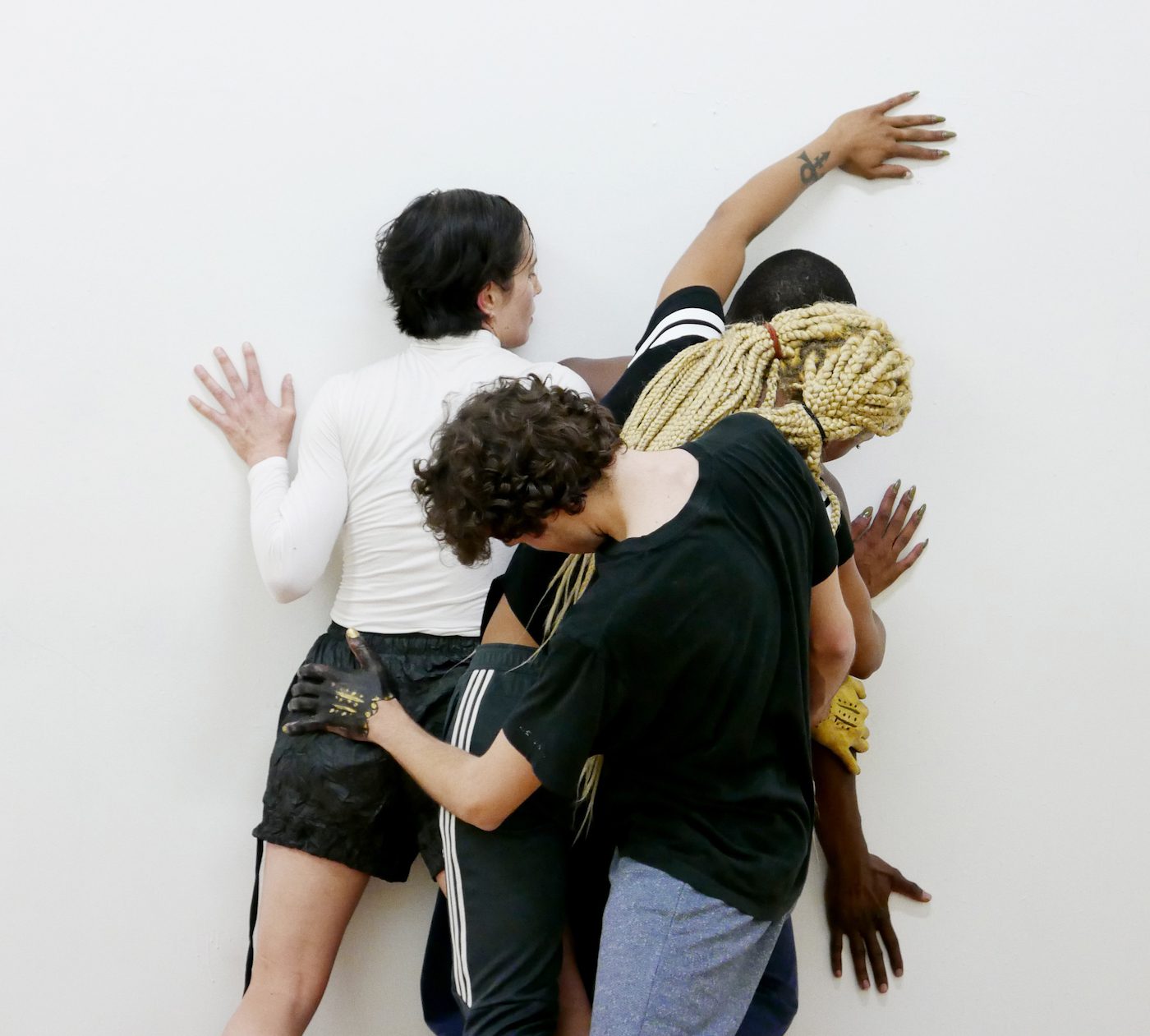Representing Zimbabwe at the 57th Venice Biennale alongside three other artists, Admire Kamudzengerere took over the country’s pavilion with drawings and performances. Here he talks about why dance is so important in life and how performance can be an excellent vehicle to explore serious issues

Admire Kamudzengerere and Rachel Monosov, Transcultural Protocol, performance, 50 min, 2017. Image courtesy of Catinca Tabacaru Gallery
Contemporary And (C&): How did you develop an interest in performance? Admire Kamudzengerere: I made a few performance works years ago, but my interest in performance was only recently rekindled when I started working with Israeli artist Rachel Monosov. She had just made a three-hour durational work showing at Belgium’s Museum Dhondt-Dhaenens in January 2017, where she used dancers and actors. And in March 2017 we decided to make a collaborative work while in New York City for three months together. Our collaborative work deals with our personal biographies and backgrounds. We research and explore gender and culture in the context of our time. As we were discussing the idea of making this work, we naturally started developing a performance piece because the medium lends itself to immediacy, to physicality, to visibility and narrative. You can say so much with movement and the interaction of bodies. C&: How does drawing influence your choreographic work? AK: I write the choreography of a piece through drawings. It helps me develop the ideas and plan the narrative arc. For the work that showed at the Zimbabwe Pavilion of the Venice Biennale, Transcultural Protocol, Rachel Monosov and I took our inspiration from art history. The shapes and movements came from paintings and sculptures, so the drawings also became the inspiration for the movement itself. Portrait of Admire Kamudzengerere and Rachel Monosov. © Marc Witmer. Image courtesy of Catinca Tabacaru Gallery C&: How do you address some of the issues you’re known to explore, such as father-son relationships, masculinity and femininity, or identity politics? AK: Every gesture the body makes produces a visceral effect for the viewer. Each movement can be read in different ways. For example, In our working process, we first act out the piece ourselves and film it. Then we watch it, considering how the movements look on the Black male body in combination with the white female body. We stand outside ourselves, watching our own bodies that hold such clear physical attributes. Those movements that work, that we are interested in, we give to the dancers and then continue developing the piece from this initial blueprint. C&: And why do you think dance and performance can be such great vehicles to explore those issues? AK: Dance and performance are emotional and direct languages. That is effective in communicating with an audience. We work with dancers because the capabilities of their bodies – their strength and endurance – lends itself to durational, physical pieces. It’s not for their ability to move fluidly or theatrically. It’s not like going to the ballet. Our performances are living bodies that one experiences, and at times a viewer must walk out because the piece is too intense. So the “dancer” is not dancing, but he and she are masters of the body in ways that no other human is. Plus, dancing is very important in life – it offers happiness regardless of status, gender, or nationality. Interview by Will Furtado

if a body raises a fist up quickly, a viewer may interpret this motion as masculine and violent. Thus, through composing this movement, and considering what comes before and after it, we create a narrative that, in its entirety, touches upon gender and our expectations from a female and a male body.
This Interview was first published in our latest Print Issue #8. Read the full magazin here.
More Editorial